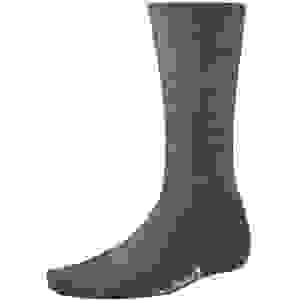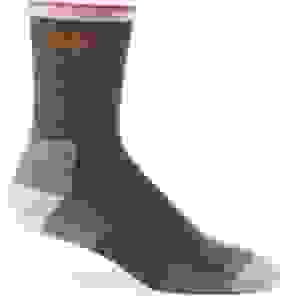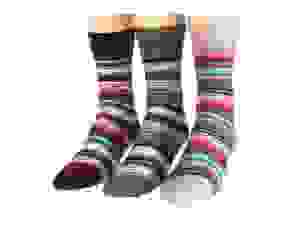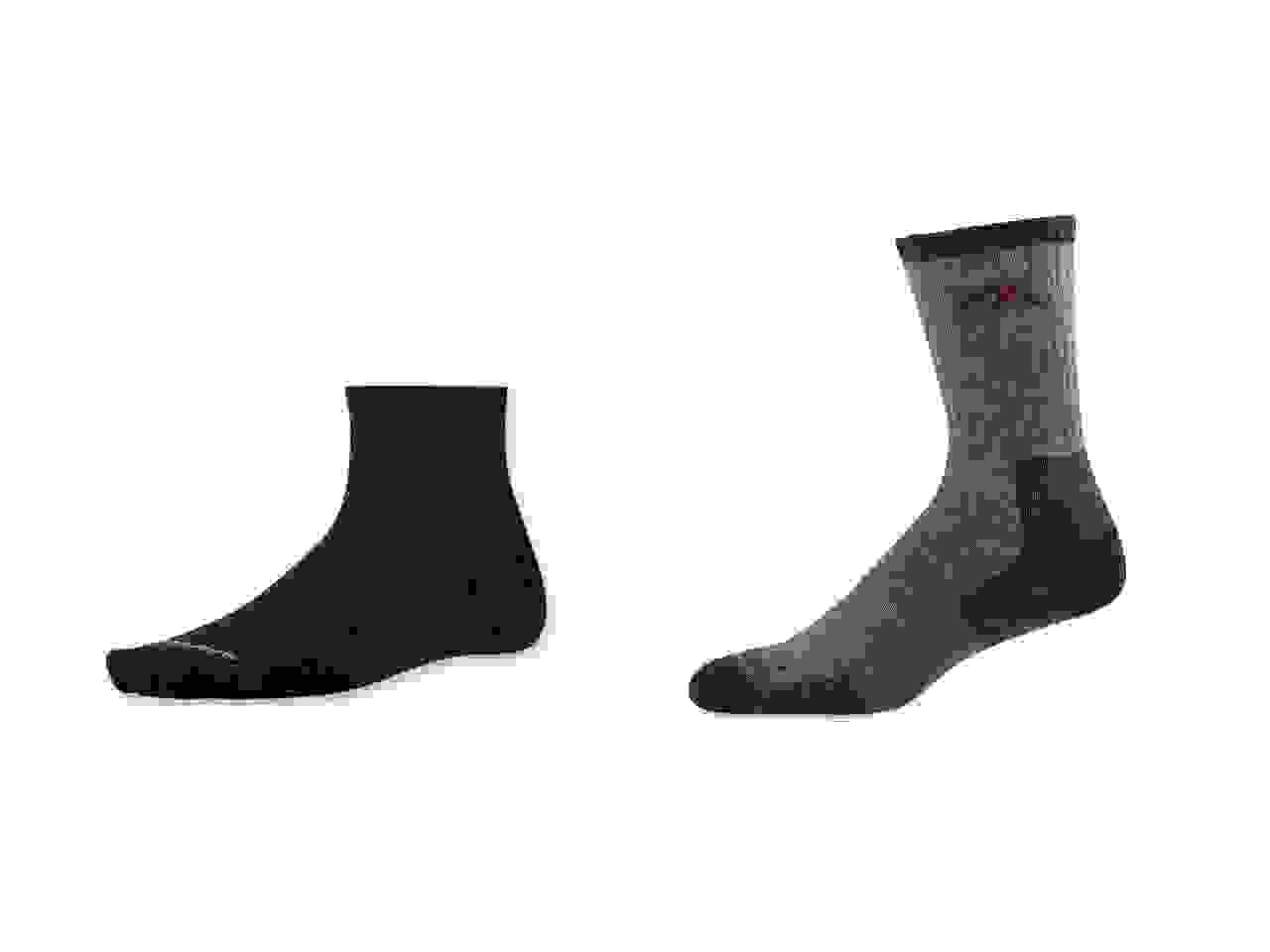As much as I would love to imagine myself as a stalwart and courageous swashbuckling voyager, sailing the seven seas with magnanimous adventures of legendary renown, I am in fact a scrawny, spindly creature of skeletal countenance and atrocious constitution. Without the technological marvels of high-quality travel gear, I would have devolved into a rapidly decaying husk of a man amongst the snowbanks of an obscurely bucolic countryside long ago.

Luckily for you, my frozen toes and irreversibly chilled bones instilled within me the steely resolve to persevere, and thus did I begin my long and arduous journey to discover nothing but the world’s finest garments, wrought from the hands of humanity’s most skilled craftsmen, never to be caught in a meteorological maelstrom of biblical proportions with inadequate gear ever again.
And it is this wisdom which I choose to bestow upon you today. I have suffered for you, my children. But I ask of you no gifts in return. Your worship and adoration are thanks enough.
Today’s lecture: A treatise on the fabulousness of merino wool socks, and why they are far and away the best travel socks you can reasonably find. There’s no better way to pamper yourself more adorably than swaddling your toes in the exquisite comfort of fluffy merino. Allow me to elaborate.
What makes merino wool socks so great?
People talk about merino wool like it’s a miracle fabric, because it basically is. Merino has a number of properties that make it especially comfortable, particularly when compared to more familiar fabrics like cotton.

Properties of merino wool include:
- It’s an excellent insulator, and will help keep you warm in winter, and cool in the summer.
- It can absorb a significant amount of moisture, but since it’s the interior of the fiber where the moisture resides, the fabric feels dry, even when wet. It will eventually get over-saturated, but it’ll take a lot longer than either cotton or synthetic fabrics, which quite often feel like you’re wearing a wet garbage bag.
- It stays warm even when wet, which is something cotton simply can’t accomplish, preventing the chill of wet fabric that is typical of other fibers.
- It dries quickly. Depending on fabric weight and other factors, it can even match the quick-drying performance of certain synthetic fabrics, or come close.
- It’s naturally anti-bacterial. The structure and chemical properties of merino wool create a horrible environment for microorganisms, which also means…
- It’s naturally odor-resistant. Because most body odor is actually caused by bacterial waste products, the naturally anti-bacterial products prevent this odor from building in the first place.
- It’s ridiculously soft. This will depend on the specific fibers used (you’ll read about microns sooner or later; anything under 20 will be luxurious), but it’ll be as soft as the softest brand-new cotton you’ve ever felt.

These properties are useful for all sorts of clothing, but especially helpful for socks: They’ll keep your toes warm, but with less likelihood of overheating. They’ll absorb moisture, meaning your feet won’t feel nearly as soaked under bulky shoes. They’ll air-dry rather quickly if you take your shoes off for a break, and, perhaps best of all, they won’t offend the nasal passages of passersby when you do.
Oh, and I forgot about blisters. Literally. Merino wool socks work spectacularly well at preventing them, and I’ve been using merino wool socks for so long that I can’t even remember them.
What makes them the best travel socks?
Travel brings with it certain limitations. Namely, a frequent lack of adequate laundry facilities. This is where merino wool shines.
Because of its natural anti-bacterial properties, washing merino wool on a daily basis isn’t absolutely necessary; after letting it air dry overnight while you sleep, it’ll seem brand new.

Certain mountaineers have pushed merino wool’s legendary limits by wearing a single outfit for months at a time while hiking through the wilderness, never changing or washing their clothing at all. And although I wouldn’t go that far, it means you won’t have to worry too much about skipping laundry for an extra day or two.
And if you get stuck doing a sink wash, it’ll dry faster than cotton. Maybe not quite overnight, depending on the thickness of the fabric (and you’ll want it to be thoroughly dry to prevent that weird wet wool smell), but it’ll happen quickly enough to make hand washing a realistic option. It also means you don’t need that many of them, which offsets the cost of buying a few, and reduces pack size, so you can travel with just one bag.
Temperature regulation and absorption also place merino wool in a class of its own. Weather and climate fluctuations happen all the time, and without a warm and cozy house to go back to, you’ll be stuck with whatever gear you brought along with you. Backpackers need versatile, reliable gear that’ll work in whatever situation they might encounter, and merino wool’s temperature regulation and moisture control mean it’ll handle chilly evenings and hot weather hikes equally well, and far better than alternatives.
These might sound like obscure, technical characteristics, but they add up to merino wool socks being vastly more comfortable when compared to just about anything else. The first day I tried a pair of merino wool socks, I threw out all the others and never went back.
My travel sock setup
Though merino wool offers exquisite temperature regulation, long term travel inevitably brings such a broad range of temperatures that a platonic coronation of the ideal World’s Best Travel Socks will simply be impossible.
Thus, I prefer two:
- A lightweight, ankle-height sock with little-to-no cushioning for hot weather travel, for those days when sandals just won’t cut it. I like the Smartwool PHD Outdoor Ultra Light Mini. The name is complicated and ridiculous (and they have a million other slight variations), but this one has no cushioning at all (unlike just the “light”), which is nice on hot days, as long as your shoes are comfy.
- A warmer, regular-height sock with loftier cushioning for cold climates. I like the Darn Tough Micro Crew Cushion. These have lasted longer than the equivalent Smartwool socks I had previously, plus they’re more densely knit, and therefore less prone to shrinkage and expansion. They’re also shorter (hence the name “micro” crew), hitting just below the calf, meaning they don’t fall down nearly as much as something that covers a bit of the calf itself.
Fun pictures!

During a long-term trip in which temperatures include both sweltering highs and morale-destroying lows, I’ll bring two pairs of each type, and alternate as necessary. On really hot days, I’ll wear sandals, and on really cold days, maybe one of each, though the inner sock would have to be really thin to allow this, probably with no cushioning at all.
Plenty of companies use the same material, so I won’t get too fussy about specific products, but I generally prefer socks that appear utterly normal, which is exceedingly rare when it comes to athletic gear of all sorts. Since merino socks have been so thoroughly embraced by the outdoor athletic industry, they’re usually built with all sorts of fancy colors and flashy design features, which I’ve always thought were kind of annoying. Once it’s in the shoe it won’t matter, so it’s not really a big deal, but I think it’s a little weird that if I want to be comfortable, I must also look as though I’m heading to the track.
And by the way, nobody makes any socks built purely of merino wool; they’re blended with nylon for durability, elastic for stretch, a little polyester for even faster drying time, and so on. Don’t worry too much about these other ingredients; they’re there to help. Just get something with at least 50% merino content, and it’ll be great.
Potential alternatives to merino wool socks
Currently, I know of absolutely nothing that can remotely match the performance of merino wool, in any category, from moisture control, to temperature regulation, to odor resistance. For the most part, there’s no reason to use anything else.
But I can think of a few potential alternatives: Tencel, modal, bamboo, and other types of cellulose fibers promise great absorbency and anti-microbial properties, and might work nicely for a pair of socks. They might be worth a try.
Other types of wool could potentially work as well; alpaca and yak wool have become increasingly popular in all sorts of areas, and I expect they’d be great in a pair of socks as well. Lots of little companies have sprung up that offer alpaca socks, so it’s not hard tracking them down. I’ve even seen bison wool socks, which would probably work too.
Personally, I try to stay away from socks made primarily from synthetic fabrics. Polyester socks promise amazing drying times, which is fine if moisture has somewhere to go (they can escape more easily from meshy athletic shoes, for example), but if it’s stuck inside a leather shoe, particularly on a hot day, that moisture has nowhere to go, and will accumulate into a foot-sized steam bath. Merino wool can at least offer some absorbency, reducing that icky wet-sock sensation, and keep pungent bacterial growth in check. Blends with both are good though.
Well, that should just about do it. Get something for warm weather, and something for cold weather, in whatever color you like, and they’ll be your new favorite socks, and keep you cozy on adventures far and wide. Enjoy your newfound toe-cozying freedom, and venture forth.




Swiftwick socks are the best!!!
Merino socks are fantabulous (that’s a word). Currently own 3 pair and aiming to replace all my cotton socks – though at $30-$40 a pair, they ain’t exactly cheap!
Um, what? $30-$40 a pair? The Smartwools I like are maybe $18 a pair, and permanently on sale if you comparison shop all over the web. Perhaps you live in some isolated country with enormous import fees?
Yup, New Zealand, where everything’s more expensive – even the stuff we make here!
That is lame. The wool comes from you guys, and you can’t even get it cheap. Don’t feel bad, though. Our country is collapsing in on itself, and your island fortress is too far away from us to bring down with us.
Ah, always a silver lining!
I’m with you on Smartwool. Wigwam makes similar socks in US too.
I recently heard of People Socks (http://peoplesocks.myshopify.com/), which are a 71% merino wool blend and only $6-7/pair on Amazon. I’ll test out a pair and let you know how well they hold up.
I have some right now. Quality is good, but they’re thick, and tall. Probably more like Smartwool’s regular hiking socks rather than their light hikers. Certainly not bad, but to me they’re just for winter. They’re also long enough that they go up nearly to my knees.
I’m specifically referring to their “Below Zero” socks; they’ve had others, but those are the big ones that are so wildly popular, so that’s what I’m commenting on.
Thanks for the heads up. Definitely not what I’m looking for in this case. The search continues!
I have bought nothing but merino socks for the better part of a decade, I wear them all year even in the heat of the summer. Air dried over night they last at least a few days before becoming dodgy. By way of brands I have tried many. My personal favorites are made by Fits and Vermont Darn Tough. They cost about the same as Smartwool but from my, and my wife’s, experiences they last much longer. My wife walks hard and consequently is very hard on socks and Fits and Darn Tough have worn quite well for the past couple of years. Fits used to make Smartwool back in the day before Smartwool moved production off shore and now Fits is working to get their own brand established. Although I have not tried socks by Icebreaker they are likely also very good. I have a lot of Icebreaker clothing and all the pieces are impeccably made.
Have to agree with Alan about Darn Tough socks. I usually wear Smartwools but tried some Darn Toughs on the last trip. Was sold on the fit and quality. Bought enough that they are both my travel socks and my everyday wear. In addition to great quality, they have a super guarantee. http://darntough.com/about-us/our-guarantee
I recently decided to give Darn Tough a try, after my Smartwools had deteriorated since being worn for a couple years. I can definitely see the knit is denser on the Darn Tough socks, which I expect is part of the reason for their allegedly higher durability. I have high hopes.
Currently on the tail end of a three week trip in Italy with temperatures into the 90’s with matching humidity. Been wearing Darn Tough light hikers and my feet are relatively dry at the end of the day after lots of city walking. At times I’d wear the same pair four or five days in a row without washing. They never smell or feel dirty and I just fail to realize they’re days old socks. Ice Breaker tech t-shirts are working out just as well. When I wash, they dry overnight. Merino wool is the miracle fabric.
It’s pretty great. I look out for alternatives just due to the price, but haven’t really found anything comparable other than potentials that are so rare I can’t do much but speculate.
JoeyL, have you found the icebreaker t-shirt to work well in that much heat? Debating merino vs. capilene for Spain. Leaving on Thursday. Maybe one of each?
So if JoeyL doesn’t chime in here…I’ve used Capilene 1 (the lightest weight of the lineup) in blazingly hot summers, and it works quite well. Icebreaker’s Tech T Lite will also work nicely, as the fabric is very thin, but it’s not a bad idea to have a t-shirt or two that you can really beat up. Capilene is so damn slick and smooth that even the most vigorous manhandling of a sink wash won’t do a thing, nor will heavy backpack straps ever cause wear and tear. Merino certainly isn’t bad, and there’s a good reason why everyone swears by it, but thorough scrubbing or other long-term abrasion will wear down the fibers sooner than with synthetic. You can be gentle, of course, but occasionally you might want to give it a bit more of an aggressive wash, so it’s not a bad idea to have something that simply cannot get ruined this way.
Sorry Alan, I didn’t see the post earlier. Like a month ago…
The tech tees worked really well for me in that heat and they continue to do so in the Los Angeles summer heat. I used to wear various synthetics and I felt they’d gather heat on the fabric while in the sun.
Snarky is right about the price for the ice breakers. But the comfort, light weight, quick dry, and lack of stink make it worth it to me. The 30% off sale going on right now helps a lot too.
How was the trip and how did the t-shirts work out?
JoeyL, The trip was fabulous and I would go back in a heartbeat.
I went back and forth while packing and ultimately came up with this system. During the day I wore Ex Officio or RailRiders long sleeve shirts mainly to avoid dealing with sun screen. I was not overly hot or uncomfortable wearing them and they look a bit nicer than a t shirt. I’d wear each shirt three days in a row and then wash them. That worked remarkably well and I didn’t notice any bad smells. I wore a merino t shirt to sleep in each night and after two weeks the t shirt had minimal smell (any longer and I would have washed that as well). In part I was pushing my clothing to see how long I could go before I had to switch it up and wash various pieces. I am working at packing lighter and the trip proved to be a good testing ground for various garments and washing cycles. In the end I didn’t wear the merino t shirt during the day but I am certain I would have been fine even in the summer heat.
An interesting aspect of merino anything versus synthetics is that I seem to be more comfortable in a wider range of temperatures with merino. I have no idea why. I live in Minnesota and from November through March I literally wear merino long underwear and crew necks daily under my clothes.
An alternative is to buy cheap socks as throw away, consumable items. I bought a pack of 3 trainer socks in the market in Antigua, Guatemala for 10 Quetzales, thats $0.40 each pair. At that rate you could replace them weekly!
Hopefully they’re totally biodegradable…otherwise that seems incredibly problematic.
My thought exactly..as I am wondering what children are labouring “somewhere” in some toxic chemical sock factory so you can wear cheap socks.
Somebody or something somewhere is paying for your “cheap”. Think eggs.
(Heading to Guatemala next early spring, have some smartwool and researching other socks and things)
Just back from a trip to Mexico. Temps in the high 80’s. Wore Ibex and Icebreaker t shirts and polos made of merino and they were surprisingly comfortable in that weather. Merino has an amazing ability to be comfortable in a very wide range of temperatures.
Im a big fan of the Patagonia Meirno Med&Light Hiker socks. Used them for many years in US and Alps and all over Eurozone! The newest ones have a little bit more fluffy padding in the toes/heals than the older ones but its nice – esp in hiking boots. Some of the short-cut Icebreakers too but usually pref full with hiking boots/shoes. almost everything else I take is from Icebreaker Ts/Shorts/Sweaters.
There are plenty of sales on other Merino blends like Lorpen. Its great to try a pair from 2-3 brands to find what you like fit/style wise. Not all merino socks are the same! But you usually cant go wrong with SmartWool or Patagoina who have widest selection/styles.
I had some Patagonia socks a while back that were great. Once I find a few that actually work, I tend to stick with them, since it’s hard to try them out in the store, so you have to buy before you try. But Patagonia is one of the good ones.
Has anybody here tried a merino polo or button front shirt? Ibex and Icebreaker both make them. Tempting, but definitely an item to purchase on sale.
On a whim, I tried out some icebreaker multisport ultralite micro socks and was immediately impressed. Very, very good socks – excellent at keeping my feet cool & dry. I’ve run them through the wringer in a hot/dry climate, a hot/humid climate, and travel washing. These socks were a smashing success every time.
I also ordered some Icebreaker t-tech v neck undershirts which also perform very, very well. The only strangeness I’ve found was that when the shirts are fully saturated with water (as they’ll be following a wash), the wool smells sour until they start to dry out. At first, I thought I’d bought some bad soap leaves, but it was the same in a machine wash at home. After a few minutes of drying, the shirts returned to a good fresh scent.
Finally – those uniqlo boxer briefs are also great!
I’ve totally re-worked my travel clothing/packing, and people are amazed at the 1-bag packing I can accomplish. Great tips on your site, thanks!
I’m looking forward to running into someone on the road dressed identically to me. That’s gonna be great.
And yes, wet wool smells weird. I don’t know if there’s any way around it, but it’s only that way when it’s pretty soaked. After a hand wash, it’s a good idea to roll wet clothes up in a towel and squish them. The towel will pull out maybe half the water, and the clothing will dry in half the time or so. That won’t solve the wet wool smell problem, but it’ll make it go away faster.